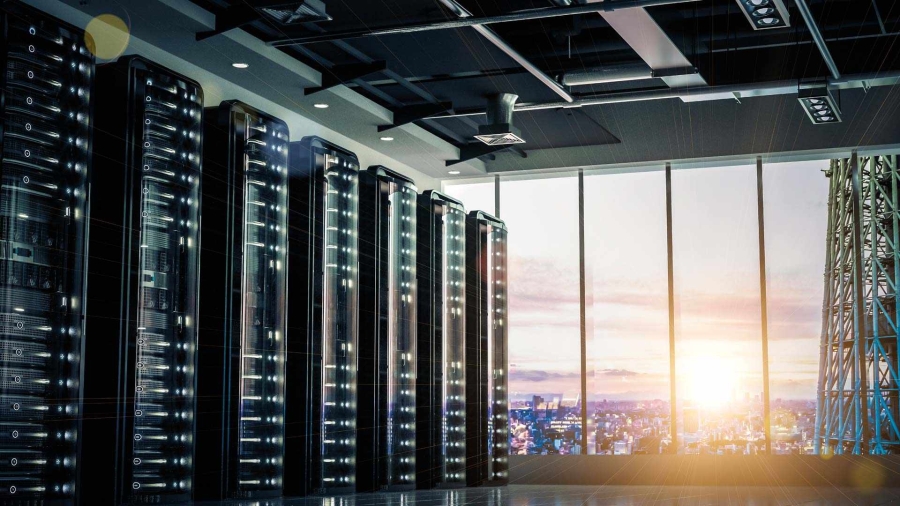Jean-Pascal Tricoire, CEO and Chairman, Schneider Electric
The year 2022 will go down in the history books as one of the most turbulent in decades. Against the backdrop of some of the worst climate-related events on record - extreme heatwaves across Europe, a dried-up Yangtze River in China, catastrophic flooding in Pakistan – economies and societies around the world also faced painful geopolitical turmoil and an energy crisis that caused prices to soar and exposed dependencies on supply.
However, for the glass-half-full people amongst us, 2022 will also be remembered as a turning point.
Because the root cause of these multiple crises – notably climate and energy -- is the same: an unsustainable energy model that relies heavily on carbon-dense energy sources like gas, coal, and oil, and a limited supply provided by a limited number of suppliers pushing energy prices to a point that chokes the economy.
That means the solution is also the same: diversifying and decarbonizing energy sources and empowering all of us to better produce and manage the energy we need. The medium-term objective of reaching carbon neutrality to fight climate change fully aligns with the short-term objective of energy security.
Turning the hardships of 2022 into a catalyst for positive change
The events of 2022 brought untold pain to millions around the world. But they also generated an opportunity we cannot afford to miss: to tackle the energy and the climate crises, hand-in-hand.
Because as energy prices have spiked, the business case for investing in low-carbon technologies has never been greater, and the payback has never been faster. Meanwhile, the damage being caused to our environment is becoming irreparable.
We need to create a new energy future, one that allows both people and the planet to prosper.
We need a major acceleration on the demand side of the energy equation
So, what do we need to do?
Media headlines and roundtable discussions around the energy transition tend to focus on energy supply. That is, on phasing out the over-reliance on fossil fuels and building more wind turbines or solar farms.
That’s important. But it’s only part of the story.
The other part is about how we consume energy. According to the Schneider Electric Sustainability Research Institute, 55% of the transformations required to meet our carbon neutrality objectives, come from changing how we use energy - the demand side of the energy equation.
This is about electrification, and energy efficiency – reducing the amount of energy we use or waste.
Addressing the efficiency issue is really a no-brainer. But the journey has to start with data. By connecting everything that uses energy, from the lights in our office buildings to the machines in our factories, to the air conditioners in our homes, we can measure how much energy is consumed, when, and where. Combine this information, and layer it with software, Artificial Intelligence (AI), and data analytics, and we can control and adapt our usage for maximum efficiency, decreasing our energy demand – by up to 30% in some cases.
The other crucial component is electrification.
This is about electrifying how we drive, heat our buildings, and cook. Replacing gas heating and combustion engine cars with electric heat pumps and EVs will massively improve energy efficiency and reduce CO2 emissions.
But it’s also about how we generate electricity.
We need to be realistic here. Although the share of renewables is fast increasing, fossil fuels will remain the most important part of our energy mix for quite some time. It’s just not possible to shift away from coal, oil, and gas overnight, or even in the mid-term.
We can, however, work to make them cleaner – by reducing waste and increasing efficiency across the sourcing, production, and transmission chain.
We can also mobilize many more people and empower them to make greater use of decentralized, local green-energy technologies, like rooftop solar, microgrids, or tailored solutions, such as storing a building’s excess heat from cooling processes for later use.
Individual households or commercial buildings can generate their own electricity and choose what to do with it: charge their EV, power their site, store it for use on a cloudy day, sell it to a neighbor, or into the local power grid. And this makes for greater energy independence on a local level, too.
The time to accelerate toward a new energy landscape is now
Altogether, these big and little transformations can create a new energy landscape. One that’s more digital and electric for greater efficiency, reliability, and resiliency to external climate and geopolitical shocks of the kind we saw in 2022.
More importantly, much of this can be done now, with technologies that exist today.
It takes a multitude of players. It’s not just in the hands of the public sector and policymakers, but also – critically -- everyday individuals, and businesses large and small.
And it won’t happen overnight. But as 2022 ends and 2023 begins, one thing is clear: the need for rapid and determined action on decarbonization and energy security has never been greater.
The logic and business rationale for change, too, are more compelling than ever. Because the tools we can deploy to bolster our energy security and tackle climate change are the same.
And they put within reach a future in which every one of the 8 billion people on earth could have access to reliable, affordable, clean, and safe energy.
The year 2022 will go down in the history books as one of the most turbulent in decades. Against the backdrop of some of the worst climate-related events on record - extreme heatwaves across Europe, a dried-up Yangtze River in China, catastrophic flooding in Pakistan – economies and societies around the world also faced painful geopolitical turmoil and an energy crisis that caused prices to soar and exposed dependencies on supply.
However, for the glass-half-full people amongst us, 2022 will also be remembered as a turning point.
Because the root cause of these multiple crises – notably climate and energy -- is the same: an unsustainable energy model that relies heavily on carbon-dense energy sources like gas, coal, and oil, and a limited supply provided by a limited number of suppliers pushing energy prices to a point that chokes the economy.
That means the solution is also the same: diversifying and decarbonizing energy sources and empowering all of us to better produce and manage the energy we need. The medium-term objective of reaching carbon neutrality to fight climate change fully aligns with the short-term objective of energy security.
Turning the hardships of 2022 into a catalyst for positive change
The events of 2022 brought untold pain to millions around the world. But they also generated an opportunity we cannot afford to miss: to tackle the energy and the climate crises, hand-in-hand.
Because as energy prices have spiked, the business case for investing in low-carbon technologies has never been greater, and the payback has never been faster. Meanwhile, the damage being caused to our environment is becoming irreparable.
We need to create a new energy future, one that allows both people and the planet to prosper.
We need a major acceleration on the demand side of the energy equation
So, what do we need to do?
Media headlines and roundtable discussions around the energy transition tend to focus on energy supply. That is, on phasing out the over-reliance on fossil fuels and building more wind turbines or solar farms.
That’s important. But it’s only part of the story.
The other part is about how we consume energy. According to the Schneider Electric Sustainability Research Institute, 55% of the transformations required to meet our carbon neutrality objectives, come from changing how we use energy - the demand side of the energy equation.
This is about electrification, and energy efficiency – reducing the amount of energy we use or waste.
Addressing the efficiency issue is really a no-brainer. But the journey has to start with data. By connecting everything that uses energy, from the lights in our office buildings to the machines in our factories, to the air conditioners in our homes, we can measure how much energy is consumed, when, and where. Combine this information, and layer it with software, Artificial Intelligence (AI), and data analytics, and we can control and adapt our usage for maximum efficiency, decreasing our energy demand – by up to 30% in some cases.
The other crucial component is electrification.
This is about electrifying how we drive, heat our buildings, and cook. Replacing gas heating and combustion engine cars with electric heat pumps and EVs will massively improve energy efficiency and reduce CO2 emissions.
But it’s also about how we generate electricity.
We need to be realistic here. Although the share of renewables is fast increasing, fossil fuels will remain the most important part of our energy mix for quite some time. It’s just not possible to shift away from coal, oil, and gas overnight, or even in the mid-term.
We can, however, work to make them cleaner – by reducing waste and increasing efficiency across the sourcing, production, and transmission chain.
We can also mobilize many more people and empower them to make greater use of decentralized, local green-energy technologies, like rooftop solar, microgrids, or tailored solutions, such as storing a building’s excess heat from cooling processes for later use.
Individual households or commercial buildings can generate their own electricity and choose what to do with it: charge their EV, power their site, store it for use on a cloudy day, sell it to a neighbor, or into the local power grid. And this makes for greater energy independence on a local level, too.
The time to accelerate toward a new energy landscape is now
Altogether, these big and little transformations can create a new energy landscape. One that’s more digital and electric for greater efficiency, reliability, and resiliency to external climate and geopolitical shocks of the kind we saw in 2022.
More importantly, much of this can be done now, with technologies that exist today.
It takes a multitude of players. It’s not just in the hands of the public sector and policymakers, but also – critically -- everyday individuals, and businesses large and small.
And it won’t happen overnight. But as 2022 ends and 2023 begins, one thing is clear: the need for rapid and determined action on decarbonization and energy security has never been greater.
The logic and business rationale for change, too, are more compelling than ever. Because the tools we can deploy to bolster our energy security and tackle climate change are the same.
And they put within reach a future in which every one of the 8 billion people on earth could have access to reliable, affordable, clean, and safe energy.














